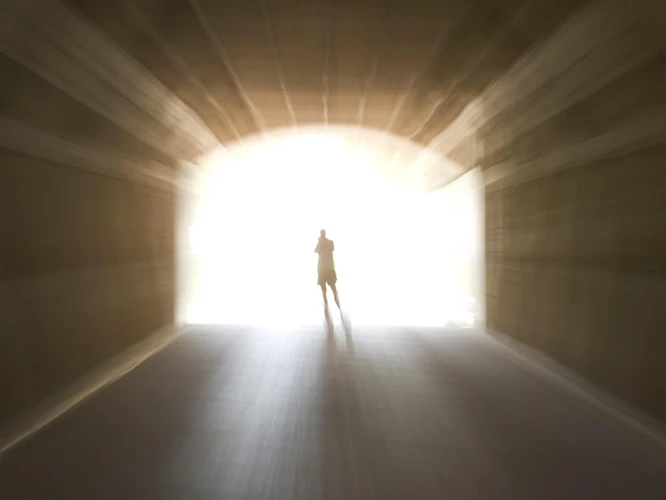The idea of death has always been a mystery to us, and it’s no surprise that those who have faced it and survived have had experiences that challenge our understanding of what lies beyond. Near-death experiences (NDEs) have been reported around the world and throughout history. One of the most commonly reported experiences in NDEs is the sensation of moving through a tunnel towards a light. This phenomenon has baffled researchers and spiritual leaders alike, and many have attempted to decipher its meaning. In the following article, we will delve into the significance of the tunnel in NDEs and explore the spiritual, psychological, and cultural implications of this universal experience.
What are Near-Death Experiences?
The human experience of dying has always been shrouded in mystery and uncertainty. For centuries, scholars and philosophers have studied the subject of death, trying to unravel its enigmatic nature. One area of interest is what happens to our consciousness when we die, and whether there is an afterlife or not. Near-Death Experiences (NDEs) are a fascinating phenomenon that provides a window into this mysterious realm. NDEs are profound experiences that people report having when they are at the brink of death or have temporarily died before being resuscitated. These experiences are unique, and many scientists and spiritual leaders have tried to understand their significance.
Historical Background
Throughout history, reports of individuals who have come close to death and experienced mystical encounters have been recorded in various cultures and traditions. Here are some notable examples:
- Ancient Egypt: The Egyptians believed in a God named Anubis, who guided the spirits of the dead through a dark tunnel to the afterlife.
- Greek Mythology: The Greek god Hermes was said to guide souls to the underworld through a cave or tunnel.
- Native American Culture: In Native American cultures, the concept of a tunnel or a path leading to the afterlife is present in many traditions. For instance, the Ojibwe people talk about a ‘spirit path’ which is believed to lead a dying person to the afterlife.
- Medieval Christianity: St. Patrick, a Christian saint from the fifth century, claimed he had a vision of a dark tunnel and a bright light at the end of it, which he interpreted as a passage to heaven.
These historical anecdotes illustrate that the idea of a tunnel or a path leading to the afterlife is not a new concept. However, it wasn’t until the 20th century that the term ‘near-death experience’ was coined to describe the phenomenon. French researcher Victor Egger was the first to use the term in his 1892 book ‘La Mort Apparente’. The term gained widespread use in the 1970s after Raymond Moody published his book ‘Life After Life’ which featured case studies of people who had experiences of the tunnel phenomenon.
Experiencing the Tunnel
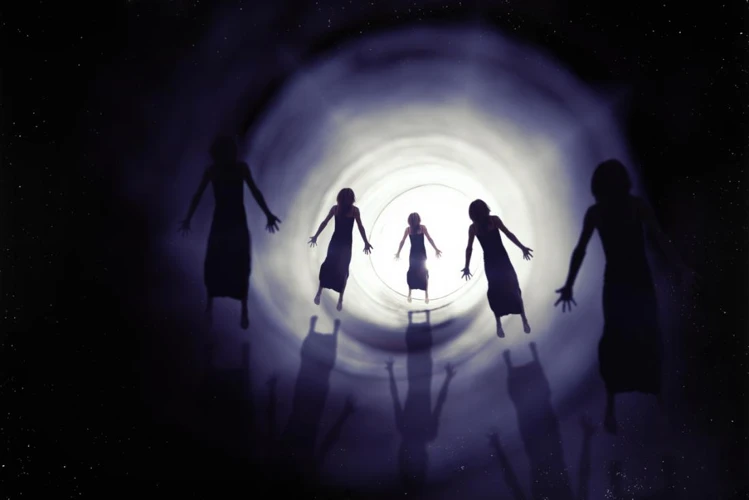
For many people who have experienced a near-death experience (NDE), one of the most common phenomena is the sensation of entering into a tunnel. This tunnel is often described as a long, dark, and narrow passageway with a bright light shining at the end. The experience of passing through the tunnel can be both peaceful and exhilarating, and it may be accompanied by a feeling of weightlessness or floating.
The Tunnel: A Universal Experience
What’s interesting about the tunnel experience is that it seems to be a universal phenomenon, found across different cultures, religions, and belief systems. This suggests that it is not merely a product of a particular religion or cultural tradition, but something that is deeply ingrained in the human psyche.
Description of the Tunnel Phenomenon
Those who report the tunnel phenomenon often describe it as a journey towards something beyond this world. The tunnel may be perceived as a gateway to another dimension, and the light at the end of the tunnel is often seen as a source of divine love and energy. Some people believe that passing through the tunnel represents a journey towards a true understanding of the universe and our place within it.
It’s worth noting that the tunnel experience is not always present in NDEs, and there are many variations and nuances to the phenomenon. Some people report entering into a tunnel before having a sense of leaving their body, while others only experience the tunnel after they have left their physical form behind.
The tunnel experience seems to be a profound and life-changing experience for many who go through it. It often serves as a catalyst for personal transformation and a deepening of spiritual beliefs, as well as a greater appreciation for the mysteries of existence.
The Tunnel: A Universal Experience
As individuals experience the phenomenon of near-death experiences (NDEs), they often report encountering a tunnel. This tunnel is a significant part of the NDE experience and is described as a place of profound mystery and transcendence. What is it about tunnels that lead so many individuals to report the same experience? What makes the tunnel a universal experience among those who have had NDEs? These are the perplexing questions that this section of the article aims to explore. Let’s delve deeper into the significance of the tunnel during NDEs.
Description of the Tunnel Phenomenon
The tunnel phenomenon is a common experience reported by individuals who have had near-death experiences (NDEs). During this experience, the individual perceives a tunnel as if traveling through it. The tunnel can be described as a narrow, dark passageway that is illuminated by a bright light at the end.
As the individual moves through the tunnel, they may feel as if they are being pulled towards the light at the end. The light is often described as warm and inviting, and many individuals report feeling a sense of peace and calmness. Some individuals may also report seeing familiar figures or loved ones in the tunnel or at the end of the tunnel.
Colors and Sounds
The tunnel may also be accompanied by specific colors and sounds. Many individuals report seeing brilliant colors, such as white, gold, or silver, during their journey through the tunnel. Sounds such as ringing or buzzing may also be heard.
Time and Distance
Despite the perception of moving through a physical tunnel, the experience does not seem to involve physical distance or time. Individuals may report feeling as if time has slowed down or has come to a stop altogether. Additionally, the tunnel experience may be reported as feeling both brief and prolonged at the same time.
Emotional Impact
The emotional impact of the tunnel phenomenon can be profound. Individuals who have experienced it may feel a sense of clarity, purpose, and heightened awareness upon returning to their physical body. In some cases, the experience may also result in a profound sense of peace and acceptance about death.
Although the tunnel phenomenon is a commonplace experience among those who have had near-death experiences, its significance and meaning vary across cultures and individuals. Nonetheless, understanding and study of this phenomenon can provide valuable insight into the nature of consciousness and the human experience of death.
Spiritual Significance of the Tunnel
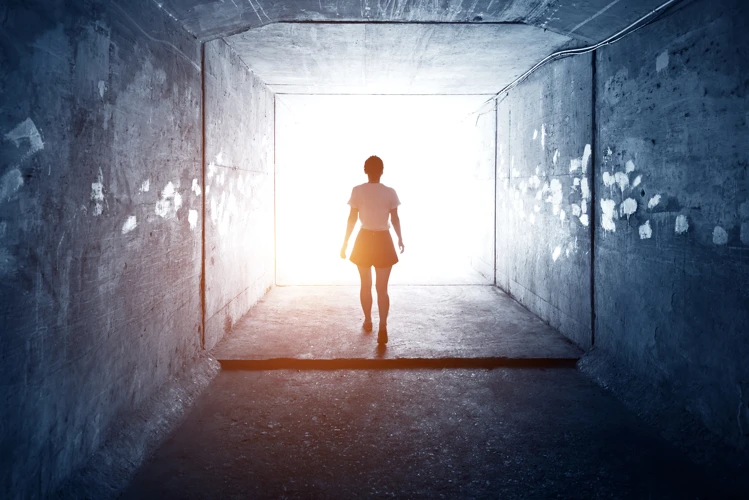
One of the most intriguing aspects of the tunnel phenomenon in Near-Death Experiences (NDEs) is its spiritual significance. Many individuals who have experienced the tunnel report it as a profound and life-changing encounter with the spiritual realm. Tunnel as a Spiritual Metaphor: One of the interpretations of the tunnel in NDEs is that it represents a passage or journey from the physical realm to the spiritual realm. As the individual moves through the dark and narrow tunnel, they are leaving behind their physical body and entering into a new realm of existence. This journey is often described as a spiritual awakening or enlightenment, as the individual gains a new understanding of the nature of reality and their place in the universe.
Another common interpretation of the tunnel is that it represents a metaphorical journey towards the light of the divine. This journey is often seen as a personal and transformative experience, where the individual is confronted with the fundamental essence of their being and experiences a sense of unity with the universe. Some individuals describe the tunnel as a pathway towards God or a higher power, while others see it as a journey towards self-discovery and self-realization.
Tunnel: A Gateway to the Afterlife: In many religious traditions, the tunnel is seen as a gateway or portal to the afterlife. It is believed that the tunnel leads to a realm of existence beyond the physical world, where the individual’s soul is judged and their fate is determined. This belief is reflected in many accounts of NDEs, where individuals report encountering deceased loved ones, angels or other spiritual beings who guide them through the tunnel towards the afterlife.
The spiritual significance of the tunnel in NDEs is often linked to the transformative effects that these experiences have on individuals. Changes in Beliefs about Life and Death: Many individuals who have had an NDE report a shift in their beliefs about life and death. They may have a greater appreciation for the interconnectedness of all things and a deeper understanding of the cyclical nature of life and death. They may also experience a sense of peace and acceptance of death, knowing that there is an afterlife and that their loved ones who have passed on are still present in some way.
Impact on Psychological Well-Being: The spiritual significance of the tunnel in NDEs is also linked to its potential impact on individuals’ psychological well-being. Many individuals report a greater sense of purpose and meaning in their lives after an NDE. They may also experience a reduction in anxiety and depression, as the experience of the tunnel and the spiritual realm provides them with a sense of peace and tranquility.
The tunnel phenomenon in NDEs has a significant spiritual significance for many individuals. It is seen as a journey towards the divine, a pathway towards the afterlife, and a transformative experience that can lead to positive changes in individuals’ beliefs and psychological well-being. The interpretations of the tunnel are varied and diverse, reflecting the complexity and depth of the human experience of the spiritual realm.
Tunnel as a Spiritual Metaphor
As many people who have experienced near-death encounters have described, the tunnel is not just a physical phenomenon but also a spiritual experience. The tunnel has been interpreted in many different ways by various religious and spiritual beliefs around the world. It serves as a metaphor for the journey from this life to the afterlife, highlighting the transformative power of death and the hope for a new, spiritual beginning. This spiritual interpretation of the tunnel offers a unique and intriguing perspective into the meaning of life and the human experience beyond the physical realm.
Tunnel: A Gateway to the Afterlife
The tunnel experienced in near-death experiences has often been interpreted as a gateway to the afterlife, a journey to the other side. This interpretation is rooted in various cultural and religious traditions that view death as a transition to another realm of existence. The tunnel represents a liminal space between life and death, the physical and the spiritual realms.
1. Cultural and religious perspectives: Many cultures and religions have a belief in some form of afterlife, and the tunnel is often interpreted as a pathway to this realm. For instance, in Hinduism, the soul is believed to pass through a tunnel-like structure called Brahmanadi, which leads to the afterlife. In Ancient Egyptian mythology, the deceased must navigate through a series of tunnels and gates to reach the afterlife. Similarly, in Christianity, the tunnel is seen as the path to heaven or eternal damnation.
2. Scientific interpretations: While the scientific community has attempted to provide neurobiological explanations for NDEs, the experiential aspects of such encounters resist explanation. Some researchers have suggested that the tunnel may be a kind of psychological or spiritual symbolism for passing beyond the physical world into unknown space.
3. Significance for individuals: Regardless of one’s beliefs about the afterlife, the tunnel provides a sense of hope and continuity. The presence of the tunnel reinforces the idea that death is not an end in itself, but rather a transformative experience. For many people, this experience is comforting and alleviates the fear of death.
4. A sense of connection: In many cases, the tunnel experience goes beyond an individual journey and is experienced as a shared connection. Those who have had near-death experiences often report feeling a sense of connection to other individuals who have had similar experiences. This experience provides a sense of meaning and purpose, and reinforces the idea that the tunnel is not merely a subjective experience but has a collective significance.
The tunnel experienced in NDEs is not merely a subjective perception but has a profound spiritual significance. It has been interpreted by various cultures and religions as a gateway to the afterlife, and provides a sense of continuity and hope for individuals facing death. Its significance extends beyond the individual and connects people to a shared experience.
Transformative Effects of NDEs

Near-death experiences (NDEs) are often described as transformative events that have a profound impact on individuals. The experience of NDEs can lead to significant changes in a person’s beliefs, attitudes, and behaviors. This can be seen as a result of the transformative effects of NDEs on individuals.
Changes in Beliefs about Life and Death
One of the most remarkable ways that NDEs have been transformative is in changing one’s beliefs about life and death. Individuals who have experienced NDEs often report a sense of connection to something greater than themselves, such as a deity, a spiritual presence, or the universe as a whole. This often leads to a shift in their perspective on life, death, and the purpose of existence.
Many people who experience NDEs report that they no longer fear death and see it as a natural and inevitable part of the cycle of life. This shift in perspective can have a profound impact on how individuals live their lives after their NDEs. Some may live more fully and intentionally, while others may become more spiritually focused or oriented toward a particular religious tradition.
Impact on Psychological Well-Being
The transformative effects of NDEs can also have a significant impact on an individual’s psychological well-being. Many people who experience NDEs report that they feel a sense of peace, joy, and love that is unmatched by any other experience. This can lead to a greater sense of contentment and satisfaction with life.
Additionally, NDEs can also help individuals overcome psychological trauma, such as anxiety, depression, or post-traumatic stress disorder (PTSD). The experience of feeling connected to something greater than themselves can help individuals feel more secure and hopeful, even in the face of difficult circumstances.
Overall, the transformative effects of NDEs are far-reaching and can have a profound impact on individuals’ lives. They offer a unique perspective on life, death, and the purpose of existence, and can lead to significant changes in beliefs, attitudes, and behaviors. Ultimately, the transformative effects of NDEs offer hope, comfort, and a sense of peace to those who experience them.
Changes in Beliefs about Life and Death
As individuals who have experienced a near-death experience (NDE) recover, they often report a transformative shift in their beliefs about the nature of life and death. This profound change in perspective leaves many in a state of perplexity, as their previous understanding of the meaning and purpose of life is challenged by what they have witnessed. The insights gained through the NDE often leave a lasting impression on the individual, with their newfound understanding shaping their worldview and influencing how they live their lives moving forward. Let us delve deeper into the transformative effects of NDEs on an individual’s beliefs about life and death.
Impact on Psychological Well-Being
Near-death experiences (NDEs) have been reported to have a profound impact on the psychological well-being of those who experience them. Some of the ways in which NDEs have been observed to affect individuals are:
1. Reduction of Anxiety: Many individuals who have experienced NDEs have reported a reduction in their level of anxiety as they no longer fear death.
2. Increase in Life Satisfaction: NDEs have been reported by some individuals to have given them a new appreciation for life with heightened feelings of joy and happiness.
3. Heightened Spiritual Connection: Individuals who have experienced an NDE may report a deeper connection with the spiritual realm, often leading to a stronger sense of purpose and meaning in life.
4. Changes in Worldview: After experiencing an NDE, many individuals often report a significant shift in their perspective on life and death. As a result, they may adopt a more spiritual or philosophical outlook and have a greater appreciation for the interconnectedness of all living things.
5. Reduced Fear of Death: Perhaps the most significant impact of NDEs on psychological well-being is the reduction of the fear of death. Research suggests that this reduction in fear may lead to lower levels of anxiety and depression in individuals who have experienced NDEs.
While the psychological effects of NDEs vary from person to person, it is clear that they can have a significant impact on individuals who experience them. These experiences can provide a new perspective on life and death and may lead to positive changes in an individual’s beliefs and attitudes.
Scientific Explanations of NDEs
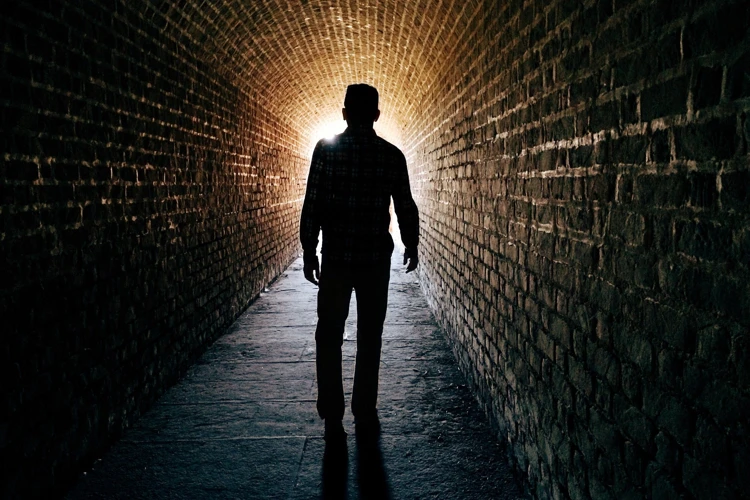
Numerous scientific theories have been proposed to explain the phenomenon of near-death experiences (NDEs). These theories attempt to provide a rational explanation for the subjective sensations reported by individuals who undergo NDEs.
Neurological Theories: One of the most commonly cited explanations for NDEs is the neurological theory. This theory suggests that NDEs are the result of altered brain function caused by reduced oxygen supply or abnormal activity in the temporal lobe. Researchers point to evidence that suggests that certain drugs or neural stimulation can induce sensations similar to those reported in NDEs. They also suggest that NDEs may be the result of the brain’s attempt to cope with a life-threatening situation.
Psychological Theories: Another set of theories centers around the idea that NDEs are a product of psychological factors. Proponents of these theories argue that NDEs are the result of the mind attempting to rationalize an experience that defies typical cultural and religious beliefs about death. This theory suggests that NDEs may be a coping mechanism for individuals who are facing the end of their life.
However, there are several criticisms of these scientific explanations. Some argue that neurological explanations fail to account for the subjective nature of NDEs and the fact that they often involve experiences that cannot be explained by brain activity alone. Alternatively, psychological explanations are criticized as they fail to account for the consistency of NDE reports across different cultures and religious traditions.
Regardless, these scientific theories provide valuable insight into the potential physical and psychological processes that may play a role in NDEs. However, the debate regarding the underlying causes of NDEs continues, and it is ultimately up to each individual to decide how to interpret their own experience.
Neurological Theories
As we delve deeper into the phenomenon of NDEs, we encounter perplexing questions about the neurological processes that may be occurring during these experiences. Some experts suggest that there may be a scientific explanation for these seemingly otherworldly encounters. Theories surrounding the brain and its functions may hold the key to understanding NDEs, but at the same time, their mystical aspects continue to elude us. Let’s explore some of the possible neurological explanations for NDEs, as we attempt to shed light on this enigmatic occurrence.
Psychological Theories
One of the prominent theories proposed by psychologists to explain near-death experiences (NDEs) is the trauma theory. According to this theory, NDEs are the result of psychological distress caused by the stress of facing death. This distress leads to a dissociative state in which an individual experiences a sense of separation from their body and enters into a kind of dreamlike state.
Another theory is the hallucinatory theory, which suggests that NDEs are merely hallucinations that occur due to changes in brain chemistry. This theory suggests that the tunnels, bright lights, and mystical beings that individuals report seeing during an NDE are simply a result of chemical changes in the brain, rather than any kind of spiritual experience.
Cognitive psychology theories also attempt to explain NDEs in terms of cognitive processes. For example, one theory suggests that NDEs are a result of a natural process of the brain attempting to make sense of the sensory input it is receiving. This theory suggests that the experience of the tunnel and other mystical elements of an NDE are simply the brain’s way of trying to create a coherent narrative from the fragmented sensory information it is receiving.
Another cognitive theory suggests that NDEs are a result of the brain’s tendency to generate positive emotions as a coping mechanism in traumatic situations. According to this theory, NDEs are simply a way for the brain to cope with the stress and fear of facing death by generating positive emotions like love, peace, and bliss.
While psychological theories provide possible explanations for the phenomenon of NDEs, they do not account for the spiritual and transformative aspects of the experience that many individuals report. These theories may provide one piece of the puzzle, but they do not fully explain the complex and multifaceted nature of NDEs.
Spiritual Interpretation of NDEs
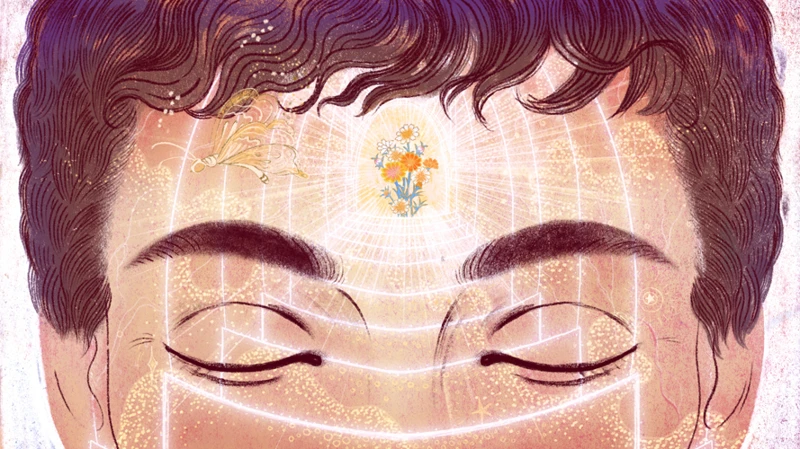
Near-death experiences have often been interpreted through a spiritual lens, with many believing that they offer a glimpse into the afterlife. This section explores the spiritual interpretation of NDEs and the various perspectives on this phenomenon.
NDEs and Religious Beliefs: Many religious traditions, including Christianity, Islam, and Buddhism, have their own interpretations of near-death experiences. In Christianity, NDEs are often interpreted as a glimpse into heaven or hell, while in Islam, NDEs are seen as confirmation of the existence of an afterlife. Meanwhile, in Buddhism, the emphasis is placed on the importance of letting go of attachments to experience true enlightenment.
Interpretation by Spiritual Leaders: Spiritual leaders have also offered their interpretations of NDEs. One well-known figure is the Dalai Lama, who sees these experiences as further evidence of the continuation of consciousness after death. Similarly, Edgar Cayce, a psychic and spiritual teacher, saw NDEs as a spiritual awakening that can lead to positive transformation in one’s life.
The spiritual interpretation of NDEs underscores the transformative potential of these experiences and their ability to offer individuals a deeper understanding of the mysteries of life and death. While the exact nature of these experiences remains a subject of debate, it is clear that they hold significant spiritual significance for many people.
NDEs and Religious Beliefs
As near-death experiences (NDEs) involve a glimpse into the spiritual realm, it is no surprise that they have been closely associated with various religious beliefs. From Christianity to Buddhism, NDEs have been interpreted in different ways by different faiths. While some consider them as evidence of an afterlife or a divine presence, others view them as mere hallucinations triggered by the brain. Understanding these interpretations not only broadens our knowledge but also sheds light on the intricate relationship between spirituality and NDEs.
Interpretation by Spiritual Leaders
| Spiritual Leader | Interpretation of the Tunnel in NDEs |
|---|---|
| Christianity: | Some Christian leaders have interpreted the tunnel as a passage from this life to the afterlife, and the light at the end of the tunnel as the presence of God. They suggest that the experience of the tunnel is a form of divine guidance and reassurance that death is not the end, but rather a transformation from one state of existence to another. |
| Buddhism: | In Buddhism, the tunnel experience can be seen as a manifestation of the mind during the dying process. Spiritual leaders may interpret the tunnel as a symbol for the mind’s journey through the bardo, an intermediate state between death and rebirth, and the light as a representation of the enlightened state of being. |
| Hinduism: | Hinduism places great emphasis on the concept of reincarnation, and some spiritual leaders interpret the tunnel experience as a glimpse into the soul’s journey between lives. The tunnel represents the journey towards new life, and the light at the end of the tunnel symbolizes the ultimate destination – liberation from the cycle of birth and rebirth and achieving union with the divine. |
| Native American beliefs: | Native American spiritual leaders interpret the tunnel experience as a journey through the spirit world. The tunnel represents the doorway to the afterlife, and the light at the end of the tunnel as a sign of the soul’s reunion with their ancestors and the Great Spirit. This interpretation varies among different Native American tribes and traditions. |
Throughout various religious and spiritual traditions, the interpretation of the tunnel experience in NDEs varies. Christian leaders view the tunnel as a divine passage to the afterlife, while Hindus consider it as a glimpse into the soul’s journey between lives. Buddhist interpretation leans toward the tunnel as a manifestation of the mind during the dying process, and the light as a representation of the enlightened state of being. Native American spiritual leaders view the tunnel as a gateway to the afterlife and a reunion with one’s ancestors and the Great Spirit. It is important to note that interpretations vary even among different tribes and traditions. Nonetheless, these interpretations of the tunnel experience and NDEs as a whole offer individuals comfort in the face of death and provide a foundation for understanding the afterlife.
NDEs and Cultural Differences
Near-Death Experiences (NDEs) have been reported across different cultures and countries, albeit with some variations in the experience. Interestingly, cultural beliefs can shape and influence the perception and interpretation of NDEs.
Cross-cultural Analysis of NDEs
Studies have shown that NDEs are not limited to a specific culture or religious group. A cross-cultural analysis of NDEs revealed that there are some similarities and differences in the experience across cultures. For instance, some African and Asian cultures report less tunnel experiences compared to Western cultures.
Differences in Interpretations
Given the influence of culture on NDEs, various interpretations of the same experience are possible. For example, a person from a Western culture may interpret the light at the end of the tunnel as heaven or a divine presence, while a person from an Eastern culture may interpret it as reincarnation or the gateway to another physical life.
Cultural beliefs about death and the afterlife can affect the transformative effects of NDEs. A study conducted in India showed that respondents who had a Hindu belief system reported fewer transformative effects from NDEs compared to respondents with a Christian belief system.
Cultural differences are an important factor to consider when studying and interpreting NDEs. Our cultural background and beliefs can shape the way we experience and interpret the phenomenon.
Cross-cultural Analysis of NDEs
As the phenomenon of Near-Death Experiences (NDEs) continues to gain attention and intrigue from various fields, researchers have begun to conduct cross-cultural analysis to explore the similarities and differences in these experiences across different cultures and societies. The results of these studies have been perplexing and thought-provoking, with some researchers noting similar patterns in NDEs across cultures, while others have highlighted the unique cultural interpretations that emerge. This section will delve into the fascinating world of cross-cultural analysis of NDEs and the perplexity it brings forth.
Differences in Interpretations
When it comes to near-death experiences (NDEs), there are cultural differences in how the phenomenon is interpreted. These differences can be seen in the religious and spiritual beliefs of the individual experiencing the NDE, as well as the cultural context in which the experience takes place. Here are some examples:
- Western cultures: In Western cultures, the tunnel in an NDE is typically seen as a pathway to heaven, with bright light at the end representing eternal life. This interpretation reflects cultural beliefs in an afterlife and a Christian understanding of heaven as a place of eternal reward for the righteous.
- Eastern cultures: In Eastern cultures like India and China, the tunnel is often seen as a passageway to reincarnation, with the light at the end symbolizing rebirth. This interpretation aligns with spiritual beliefs in karma and the cyclical nature of existence.
- Indigenous cultures: In indigenous cultures like those in Africa and the Americas, the tunnel can be experienced as a journey into the spirit world rather than a physical location like the afterlife or reincarnation. Here, the tunnel is seen as a gateway to the ancestors or a realm of spirits.
- New Age and non-religious interpretations: In some cases, NDEs are interpreted outside of religious or cultural contexts, instead being seen as a metaphysical experience or a glimpse into the nature of existence. These interpretations may not involve concepts of the afterlife or reincarnation, instead emphasizing the transformative effects of the experience itself.
These differences in interpretation highlight not only the diversity of spiritual and cultural beliefs around the world, but also the importance of considering the cultural context in which NDEs occur. Understanding these differences can help us to better appreciate the significance of the tunnel in NDEs and its impact on those who experience it.
Conclusion
After delving into the phenomenon of Near-Death Experiences and the significance of the tunnel, it is clear that these experiences have a profound impact on the individual’s perception of life and death. The various theories surrounding NDEs provide insight into the scientific and spiritual basis for these experiences.
While some attribute NDEs to neurological and psychological factors, the spiritual interpretation cannot be ignored. The tunnel, in particular, represents a spiritual metaphor and a gateway to the afterlife. It signifies transformation and provides a sense of hope for those who fear death.
The transformative effects of NDEs cannot be ignored, as they bring about changes in belief systems and psychological well-being. Those who experience NDEs often have a more positive outlook on life and are less afraid of death.
However, it is important to acknowledge cultural differences in the interpretation and understanding of NDEs. Cross-cultural analysis has highlighted the differences in interpretations of these experiences, and it is crucial to approach these experiences with an open mind and a respect for each individual’s beliefs.
In conclusion, Near-Death Experiences are a complex and intriguing phenomenon that have captivated the attention of scientists, spiritual leaders, and the general public. The significance of the tunnel in NDEs serves as a symbolic representation of an individual’s journey towards the afterlife and the transformative effects that these experiences have on the individual’s perception of life and death. It is important to continue exploring the scientific and spiritual aspects of NDEs while also respecting the cultural differences in interpretation.
Frequently Asked Questions
What is the scientific explanation for NDEs?
There are several theories, including neurological and psychological explanations, but no one theory has been proven.
What cultural differences exist in descriptions of NDE tunnels?
Some cultures describe tunnels as dark and foreboding, while others view them as bright and welcoming.
Are NDEs considered religious experiences?
While NDEs can have spiritual or religious implications, they are not exclusively considered religious experiences.
Can NDEs be induced through drugs or other means?
While some drugs may produce experiences similar to NDEs, true NDEs occur spontaneously and are not artificially induced.
Can NDEs be explained by lack of oxygen to the brain?
While lack of oxygen may contribute to some of the experiences reported during NDEs, it does not fully explain the phenomena.
Can NDEs be medically verified?
Some aspects of NDEs, such as cardiac arrest, can be verified by medical professionals, but the subjective experiences themselves cannot be scientifically verified.
Do all NDE experiences include a tunnel?
No, not all NDEs include a tunnel. While it is a common experience, there is no definitive aspect of an NDE that must occur.
Do people experience the same things during NDEs?
No, experiences during NDEs vary widely among individuals and can include different sensations, images, and emotions.
Do NDEs have any lasting impact on individuals?
Many people report profound changes in their beliefs and attitudes after experiencing an NDE, often leading to a greater appreciation for life and spiritual growth.
What do spiritual leaders say about NDEs?
Spiritual leaders offer varying interpretations of NDEs, with some viewing them as evidence of an afterlife and others viewing them as subjective experiences with no definitive religious meaning.

